|
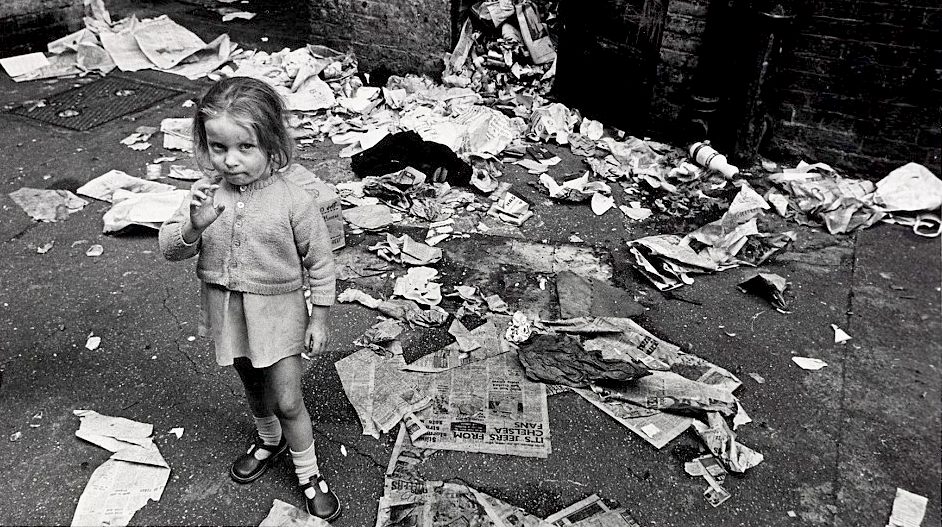
In
the United
Kingdom, we have virtual slums. The tragedy that is squalor is
thrust upon many citizens by virtue of the lack of truly affordable
housing, in favour of empire building mansions that are given consents
by councillors and planners to keep them in a life of luxury.
People
are sleeping rough in the streets and dossing down at a mates house or
flat. These are the virtual slums of today.
Any
way you look at it, if wealth is not distributed fairly you will have
poor people at the other end of the money see-saw, making the wealthy at
the other end richer as they profit from the inequalities of a Conservative
Party and Labour Party
manufactured Britain that is no longer Great. We are not saying anything
that the newspapers are not saying. We are sure that Her Majesty Queen
Elizabeth is not as amused as Her Majesty Queen
Victoria might have been.
Read
the three media article below from 2016, 2014 and 2011, and you may care
to agree that councils in the UK are making hay for themselves and not
for the most vulnerable members of society.
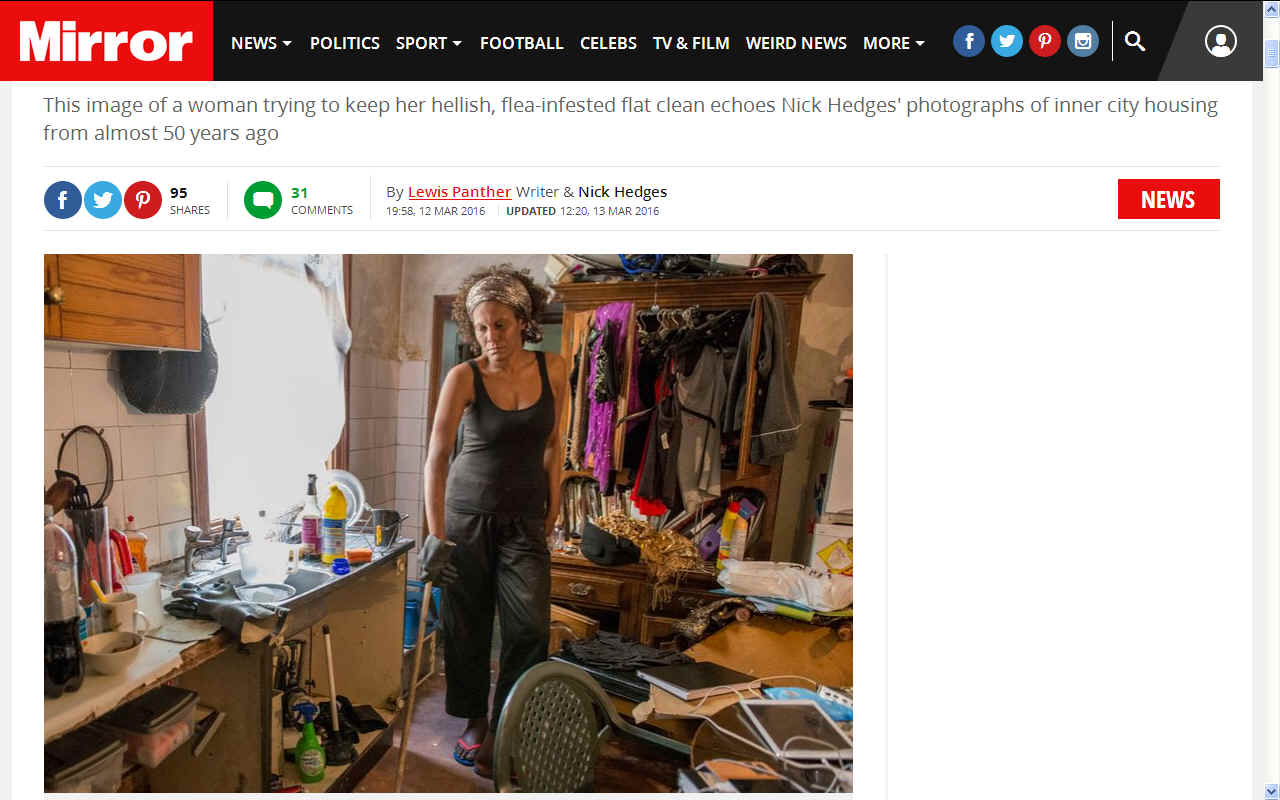
DAILY
MIRROR MARCH 13 2016
Slum conditions in 2016 Britain show little has changed since shocking pictures of the 1960s.
This image of a woman trying to keep her hellish, flea-infested flat clean echoes Nick Hedges' photographs of inner city housing from almost 50 years ago.
Anyone who thinks all the slums were swept away decades ago should take a look at this image from Britain TODAY.
The picture was released by the charity Shelter to mark 50 years of its campaign against homelessness and its fight against unhealthy housing in the UK.
And it shows there is still much to do.
In this shocking photo Sandrine, 46, is mopping, trying to keep her place in good order, but it is an uphill struggle.
She sleeps across two plastic garden chairs and shares a toilet with neighbours in this block of flats in Enfield, North London.
But rocketing rents mean this flea-ridden place was the only one Sandrine, who had her own business, could afford.
Soon after this photo was taken she arrived home to find the locks changed.
A Shelter spokeswoman said: “She fell behind with her rent on her flea-infested flat. Then after years in these awful conditions she suffered the indignity of being thrown out.”
She spent two nights on buses, which are warm and safe. Now she stays on friends’ sofas and in hostels.
Sandrine told Shelter: “I’m trying to cope, but it’s a roller coaster.”
Sadly she is not alone. Each day 1,200 people call the housing charity as more than half of renters struggle to pay landlords – often for properties in terrible conditions.
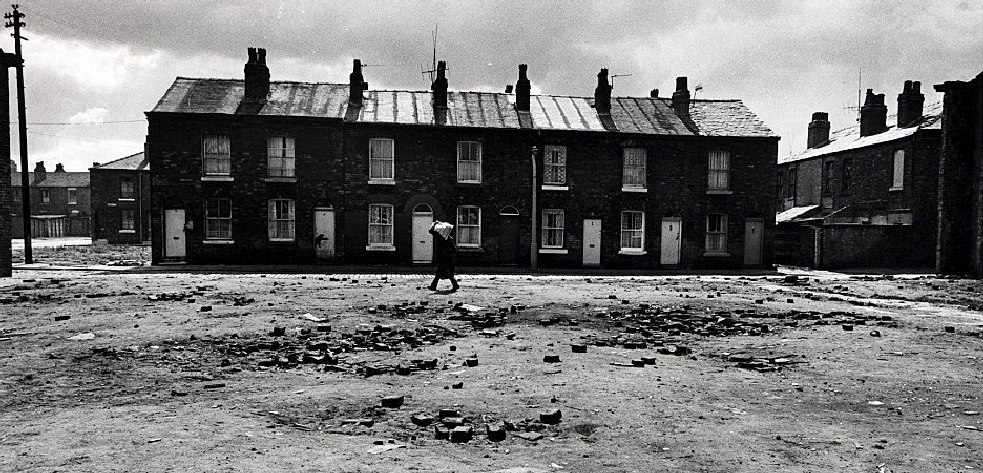
1970s
HOUSING STOCK -
Not a very appealing sight, but a big improvement on some of the slum
area, provided that you do not look too closely inside.
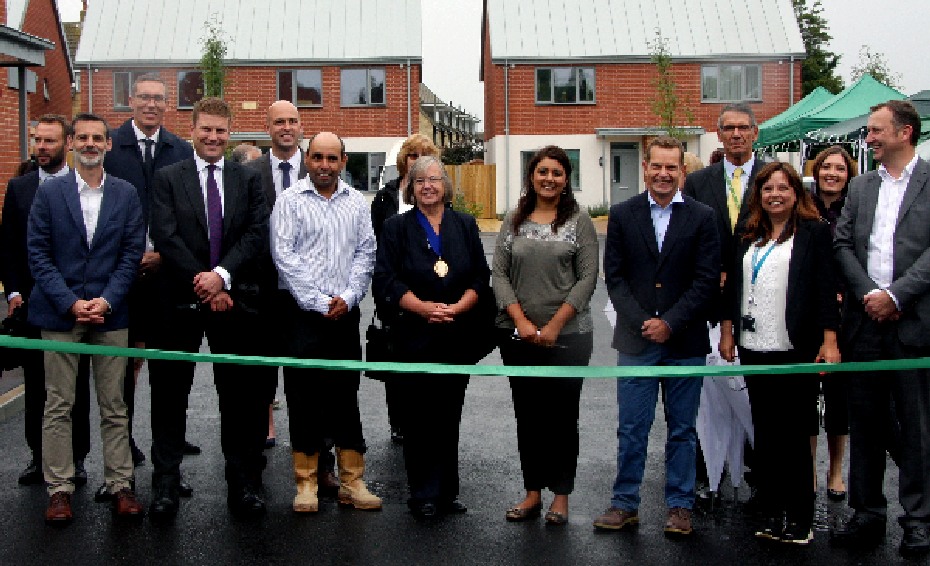
A
BIG IMPROVEMENT
- This development in Polegate may not be truly affordable, but it is a
big improvement over some of the sub-standard housing stock in the
district. So, well done chaps. Now all we need is some energy harnessing
additions and we can all start to sleep at night.
Families living and sleeping in cramped hostel rooms, such as at Hyleford Hostel in Redbridge, East London, is not unusual.
It is a depressingly familiar situation which was highlighted by photographer Nick Hedges between 1968 and 72.
His gritty pictures of the poor in city slums, alongside the devastating 1966 documentary Cathy Come Home, alerted the public to the squalid living conditions suffered by three million people forced to rent from private landlords.
Hedges’ photos, showing the flip side of the Swinging 60s, have been re-released to mark the charity’s 50th year.
Its chief executive Campbell Robb told the Sunday People: “Thankfully the slums of the 60s have faded into memory but the sad truth is this country is once again at the mercy of a housing crisis, and more people need our help than ever before.”
Since 2011 the number of homeless in temporary accommodation is up 25 per cent and the number of families in B&Bs have doubled.
In ten years the number of households renting has soared from 2.1 to 4.4 million.
Mr Robb said: “With the double blow of soaring housing costs and cuts to welfare support, it can take just one thing, like an illness or cut in hours, to leave a family hurtling towards homelessness.”
He said successive governments had failed to build enough genuinely affordable homes and to ensure families falling on hard times get the help they need.
Mr Robb added: “We all face the consequences when thousands of children grow up in homes that are simply not good enough.”
In autumn 1968 we started visiting cities such Glasgow, Liverpool, Sheffield and Newcastle and what I found shocked me to the core.
Some people in Glasgow and Liverpool were living in incredibly damp cellars with no natural light it was like something from the war.
One woman told me she had woken to the sound of a wrecking ball and her husband had to rush out to stop their home being demolished. No one had bothered to tell residents the homes were being knocked down.
In Newcastle in 1971, patches of the streets were derelict. In other cities we experienced similar poverty, with six children sleeping in one room. It never failed to shock me.
I thought I’d become blasé about it, but I didn’t. I became angry on their behalf. And I felt I was doing something to help them by working for a charity.
One thing that impressed me was that the people we came across really took care of their children.
They were extraordinary, carrying on with family life as best they could. It gave me a lot of hope.
The depressing thing is the kind of problems over housing are still with us. People are better supported now but the anxieties and worries that existed then are still here.
Things on the surface look better but the problem for families who have no steady income exists just as badly.
It reflects poorly on Labour and Tory governments. The sale of council houses has been disastrous. But the Labour in the late 1990s and early 2000s didn’t do anything to alter that course.
They can’t seem to see that they need to build more homes.
When I was commissioned by Shelter to take these photographs, I never imagined decades later they’d still have such impact.
It would be wonderful to meet the kids I photographed all those years ago and for them to be able to tell their stories. I often wonder if they went on to lead happy and healthy lives.
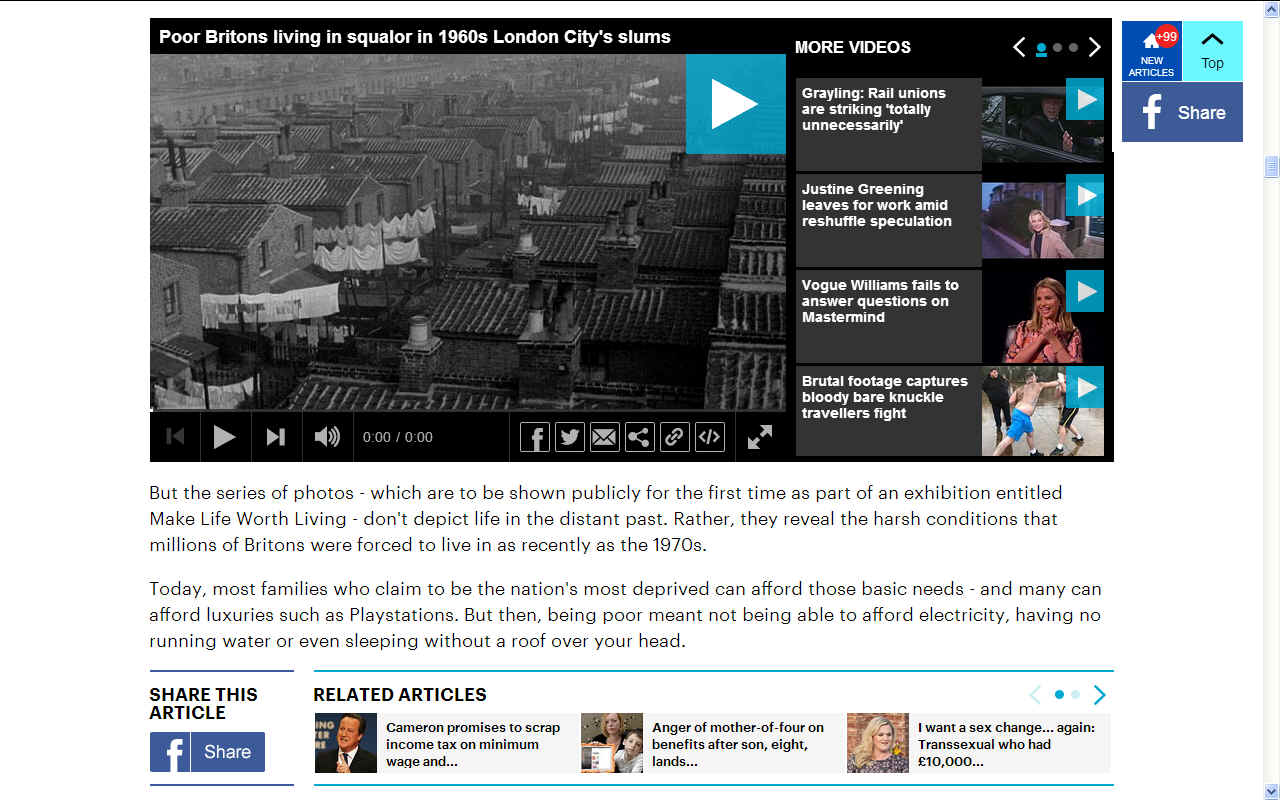
THE
DAILY MAIL OCTOBER 2014 - When poverty meant more than just not having the latest PlayStation or trendy trainers:
Standing against moulding wallpaper in a small, dank bedroom, a woman known only as Mrs M, looks grimly at the camera as she clutches one of her four young children close to her chest.
Her three others, two boys and a girl, huddle beneath two grubby rain coats - their blanket for the night - as they fight for space on two sodden cushions so they are not forced to sleep on the rickety bed's exposed metal springs.
The house that they share with Mrs M has no bathroom, no hot water and the walls are running with damp. Outside, there is a thick layer of snow and blasts of the freezing winter air sweep through a hole in the broken window.
This harrowing scene of a young British family living in abject poverty is just one of the shocking images included in a new photography collection that captures the real squalor of what it was like to live in the nation's slums - just 40 years ago.
But the series of photos - which are to be shown publicly for the first time as part of an exhibition entitled Make Life Worth Living - don't depict life in the distant past. Rather, they reveal the harsh conditions that millions of Britons were forced to live in as recently as the 1970s.
Today, most families who claim to be the nation's most deprived can afford those basic needs - and many can afford luxuries such as Playstations. But then, being poor meant not being able to afford electricity, having no running water or even sleeping without a roof over your head.
Photographer Nick Hedges spent three years visiting areas of deprivation throughout the UK in the 1960s and 1970s to create these stirring images for the housing charity Shelter.
Launched in December 1966, the charity's campaign aimed to dispel the myth that only living on the streets were homeless and to change the way people think about social issues, using the power of photography.
Mr Hedges photographed slum housing in major cities such as Glasgow, Birmingham, Manchester, Leeds, Bradford and London, documenting the daily struggle of the nation's poorest and the distressing conditions faced by more than three million people.
At the time it was highly unusual for a documentary photographer to focus on domestic issues, as war and international stories were more favoured in the media world.
Despite being taken decades ago, the photographs have not been shown publicly since then following a 40-year restriction to protect the anonymity of the subjects. He donated 1,000 prints from his work to the National Media Museum in 1983 but they could not be used for that reason.
During the project, Mr Hedges came across families who slept with the lights blazing to keep the rats from scurrying around their house at night; bedrooms filled with pools of rainwater and kitchen walls decorated with reams of peeling wallpaper.
In one photograph taken by Mr Hedges, a father looks desperately at the kitchen wall in his rat-infested Glasgow home as his young son looks innocently into the camera. In another, a young girl dressed in rags cuddles a screaming baby close to her as she stands in a lonely, dark house.
Mr Hedges came across one family living in Glasgow - Mrs Gallagher and her children - who kept their lights on at night, to keep an army of rats away from their home at night. They once counted 16 rats in their room.
He met one woman - Mrs Chichockjy - in Liverpool in July 1971, who had been visited at their home by then Housing Minister, Peter Walker. She told the photographer that Mr Walker had said it 'wasn't fit for human habitation' - before adding 'and I'm still here'.
Meanwhile, Mr Hedges photographed one property where three generations of an Irish family - consisting of nine people - lived squashed in a single basement room in a multi-let house in Toxteth, Liverpool.
With each moving image, Mr Hedges included detailed contemporary notes, extracts of which will appear alongside the collection of 100 photographs when the exhibition - entitled Make Life Worth Living - opens at the Science Museum, London, on Thursday.
Mr Hedges said: 'Although these photographs have become historical documents, they serve to remind us that secure and adequate housing is the basis of a civilised urban society.
'The failure of successive governments to provide for it is a sad mark of society's inaction. The photographs should allow us to celebrate progress, yet all they can do is haunt us with a sense of failure.'
Campbell Robb, Shelter's chief executive, said: 'Nick's pictures were crucial to the early days of Shelter's campaigning, capturing a stark reality that many people in Britain couldn't even imagine, let alone believe was happening in their community.
'Many of the scenes that Nick captured are from places that have long since been regenerated, but conditions not a million miles from these exist in our communities even now, with poor housing, sky-high house prices, rogue landlords and a housing safety net that's being cut to shreds leading three million people to turn to Shelter each year.
'It's nearly fifty years since these pictures were taken and the Shelter journey began; I truly hope in another fifty years our journey will have long been completed and that bad housing and homelessness will be a thing of the past, rather than a challenge for our future.'
The exhibition, co-curated by the independent Dutch curator Hedy van Erp and the National Media Museum's Curator of Photographs Greg Hobson, starts today and continues until 18 January, 2015 at the Media Space, Science Museum, Exhibition Rd, London SW7 2DD. Entrance is free.
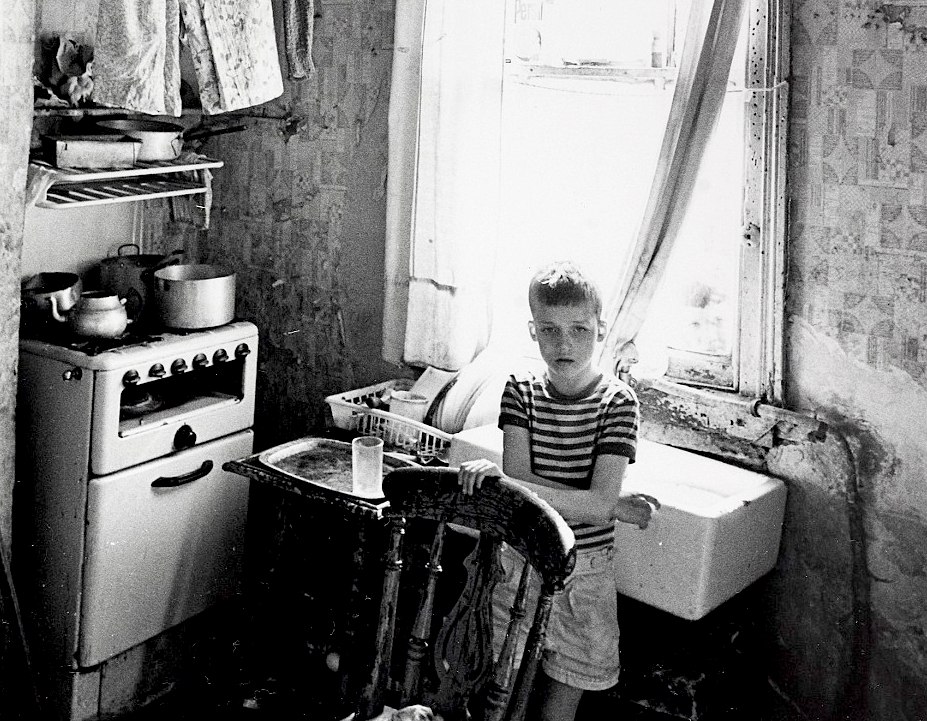
THEN AND NOW: HOW THE MEASURE OF POVERTY HAS CHANGED IN BRITAIN IN THE PAST 40 YEARS
NOW
- The main measure used by the Government to define poverty in the UK today is whether or not the household income is below 60 per cent of the median income.
-
This is calculated Before Housing Costs (BHC) such as council tax and rent are taken into consideration.
-
The UK's average salary, as of January 2014, is £26,500. The latest figures on poverty from 2012/2013, released by the Department for Work and Pensions in July this year, shows the average household income Before Housing Costs is £440 per week.
-
Based on that figure, the report found 15 per cent (9.7m) of Britons are living in poverty.
-
There have also been other types of poverty introduced which are recognised by the Government. These include fuel poverty and material deprivation, the latter of which refers to the 'self-reported inability of individuals or households to afford particular goods and activities that are typical in society at a given point in time'.
-
The Government also recognises 'persistent poverty', seen as those living in households where income is less than 60 per cent of median household, for at least three out of the last four years.
-
In 2011, each person's disposable income in the UK was around £14,000.
-
The 60 per cent measure is criticised because it is relative to the current economic state of the country - meaning there could effectively be 'less people' living in poverty during a recession.
THEN
- In the 1970s, the then Ministry of Social Security simply adopted the basic scale rates paid by the National Assistance Board, plus rent, as the poverty line.
-
Those who had income of less than that were deemed to be living in poverty.
-
In 1961, it was estimated that the average income for households was £960 per year. In 1971, it was around £2,000. It crept up slowly, accelerating in the mid-70s until, by 1979, it was about £5,000.
-
In a pioneering study on poverty in 1965 - around the time these photos were taken - Professors Peter Townsend and Brian Abel-Smith measured poverty based on the number of people living below the National Assistance levels of living, given to people by the Government.
-
Using this poverty line, Townsend and Abel-Smith estimated that some 14 per cent (around 7.5 million) of Britons lived in poverty.
-
In 1960, each person's disposable income per head was £4,754. In 1970, it was £5,752.
-
According to the 60 per cent rule, relative poverty fell during the recession of the mid-1970s, because median income fell - even though real incomes among the poor fell on average.
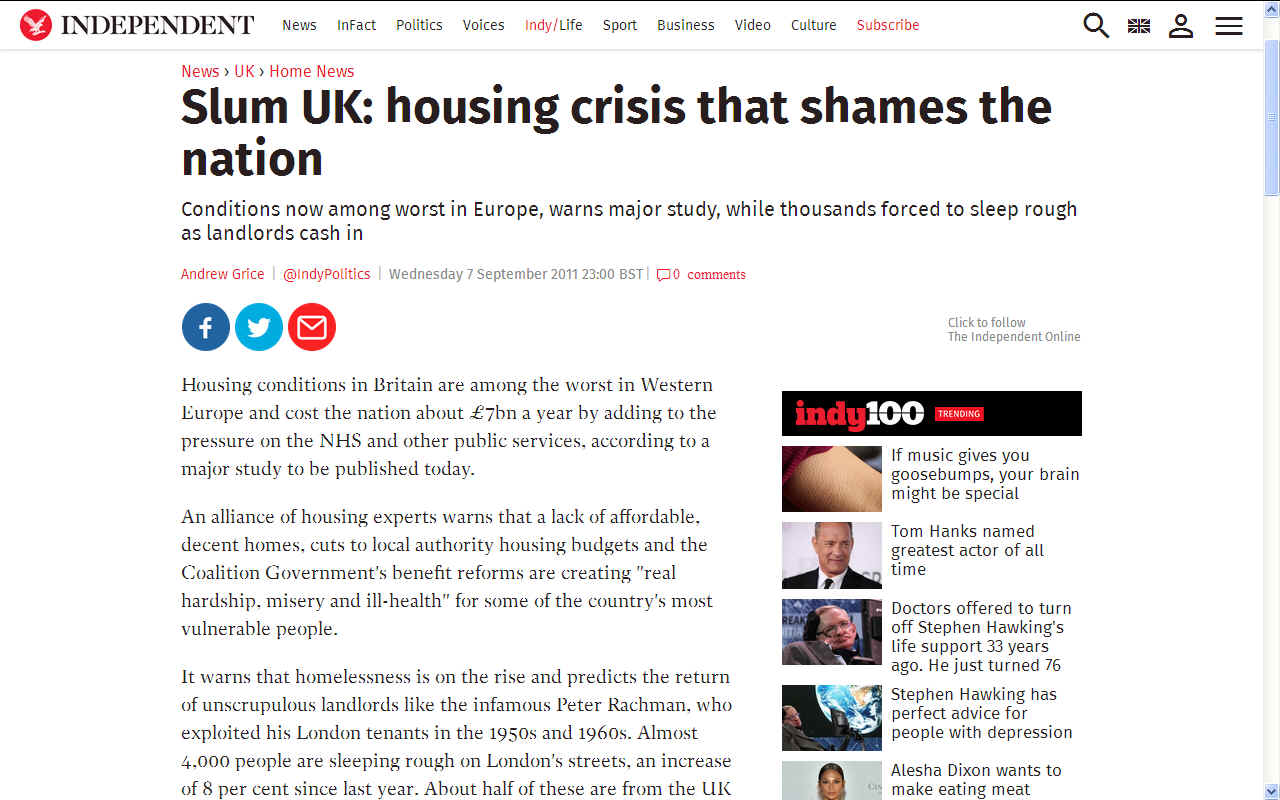
THE
INDEPENDENT SEPTEMBER 2011 - UK housing crisis
shames the nation
Conditions now among worst in Europe, warns major study, while thousands forced to sleep rough as landlords cash in.
Housing conditions in Britain are among the worst in Western Europe and cost the nation about £7bn a year by adding to the pressure on the NHS and other public services, according to a major study to be published today.
An alliance of housing experts warns that a lack of affordable, decent homes, cuts to local authority housing budgets and the Coalition Government's benefit reforms are creating "real hardship, misery and ill-health" for some of the country's most vulnerable people.
It warns that homelessness is on the rise and predicts the return of unscrupulous landlords like the infamous Peter Rachman, who exploited his London tenants in the 1950s and 1960s. Almost 4,000 people are sleeping rough on London's streets, an increase of 8 per cent since last year. About half of these are from the UK and the rest from a wide variety of other countries, notably Poland. There is little sign that the Mayor of London Boris Johnson's target of ending rough sleeping by next year will be met, the report says.
The Pro-Housing Alliance urges the Coalition to drop its plans to cut housing benefit, warning they will cause severe hardship arising from the mental and physical health problems associated with debt, poverty and enforced relocations and increase health risks from overcrowding.
Today's blueprint recommends the housing crisis should be tackled by the provision of 500,000 green and affordable houses and flats a year for the next seven years, including bringing empty homes back into use.
This proposal will fuel the debate over the Government's controversial plans to streamline planning laws. Environmental groups fear they will result in thousands of homes being built in the Green Belt. Yesterday the National Trust met Greg Clark, the Planning minister, to urge him to think again.
Ben Cowell, the trust's external affairs director, said: "The tension within government policy is between localism and economic growth and they come down clearly on the side of economic growth. So local people will be given the power to say yes, but not the power to say no."
But David Cameron told MPs yesterday: "House building is too low in this country, and it is a shocking statistic that the typical first-time buyer is now in their mid-30s. So we need change – we need more houses to be built."
Dr Stephen Battersby, president of the Chartered Institute of Environmental Health, which brought the housing groups together, said: "The lack of a coherent housing policy for the past 30 years has created an expensive housing market with a shortage of affordable housing.
"Too many people are paying too much for their accommodation relative to incomes. Too many properties pose a risk to health and safety, and the cost to the NHS of treating housing-related illness is way too high. Housing is fundamental to public health and well-being, and the Government needs a completely new way of thinking about housing." He said housing is one of the biggest casualties of the Government's spending cuts, with some of the most vulnerable members of society paying the heaviest price for a financial crisis brought on by bankers.
"I fear that we are also moving to a situation where unscrupulous landlords proliferate as better landlords move up-market. Councils will not be in a position to regulate this effectively. This is not a problem that is going to disappear conveniently," he said.
Today's report says the crisis is most acute in London, where housing costs are about 50 per cent greater and childcare costs much higher than nationally. As a result, plans by Iain Duncan Smith, the Work and Pensions Secretary, to bring in a universal credit in 2013 will be "especially damaging" in London. The spending power of a lone parent with two children working six hours a week will be £8,434 in London compared to £9,482 nationally.
There is expected to be an increase of between 30,000 and 34,000 households in the capital every year for the next 25 years, a high proportion of which will be single-person households.
The number of families on waiting lists in London doubled to 362,000 between 1997 and 2010 – and now accounts for more than 20 per cent of the national waiting list. Yet more than 6,000 council homes are empty in London, nearly a third because they need repairs, with more than 2,300 going without tenants for more than a year.
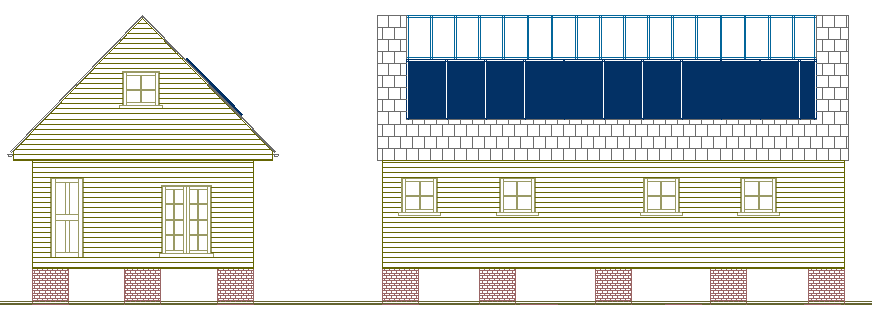
LAND
FOR AFFORDABLE HOUSING
The real problem in the UK is not the availability
of reasonably priced flatpacks, it is the scarcity of land earmarked for
affordable housing because of cowardly councils who would rather spend
money elsewhere, than upset their farmer neighbours or other property
developers - in the process keeping themselves in the lap of luxury.
SLUM
LINKS
http://www.dailymail.co.uk/news/article-2776842/Shocking-photos-capture-real-squalor-Britain-s-slums-poverty-meant-afford-Playstation.html
http://www.mirror.co.uk/news/uk-news/slum-conditions-2016-britain-show-7544949
http://www.independent.co.uk/news/uk/home-news/slum-uk-housing-crisis-that-shames-the-nation-2351015.html
https://www.jrf.org.uk/housing/homelessness
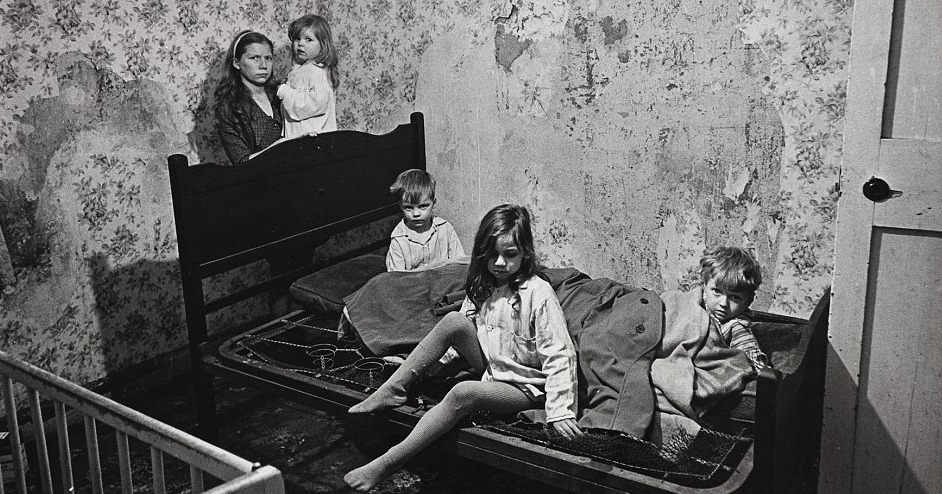





HOME
| A-Z
INDEX | MEMBERS
| MPS
| OFFICERS
|









